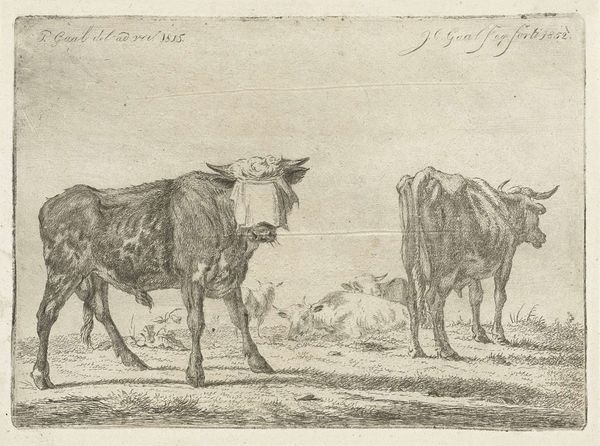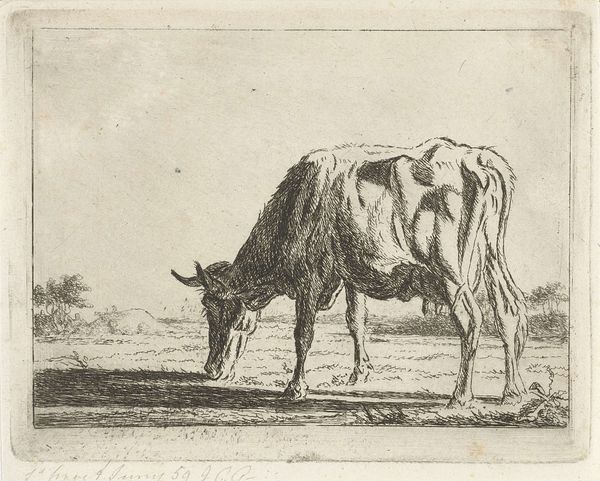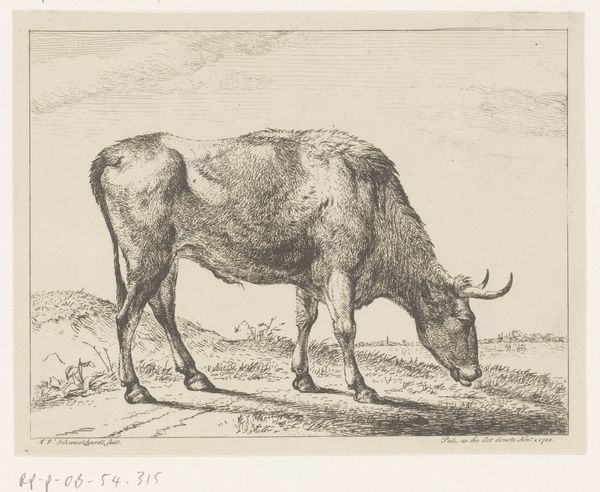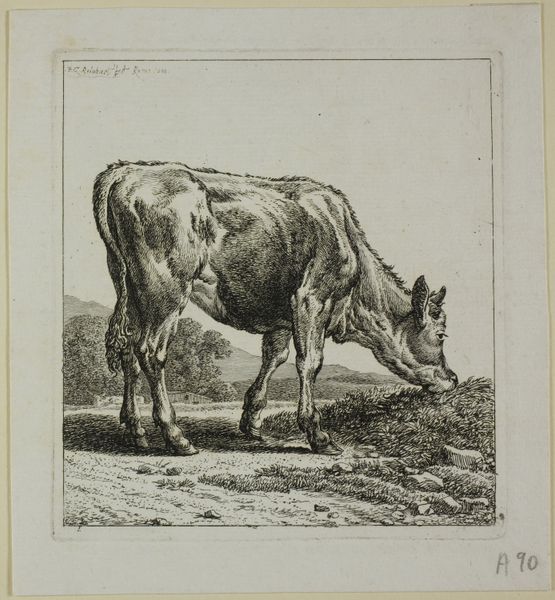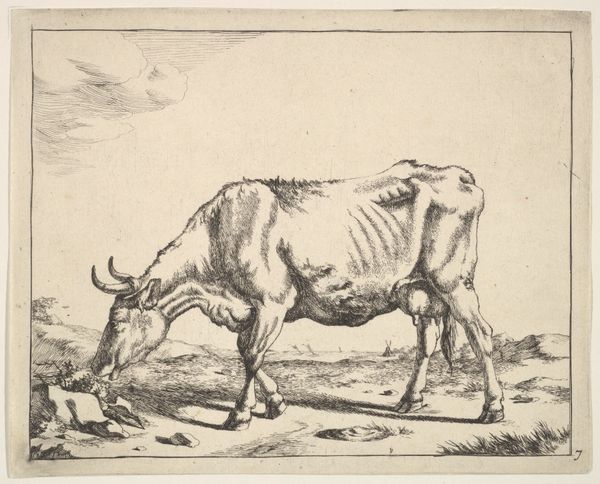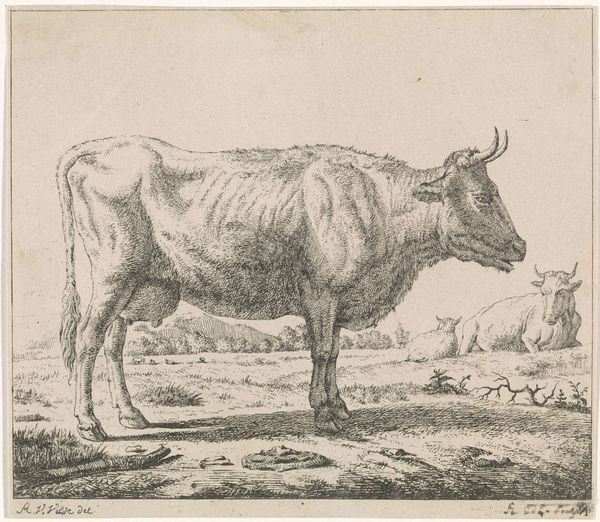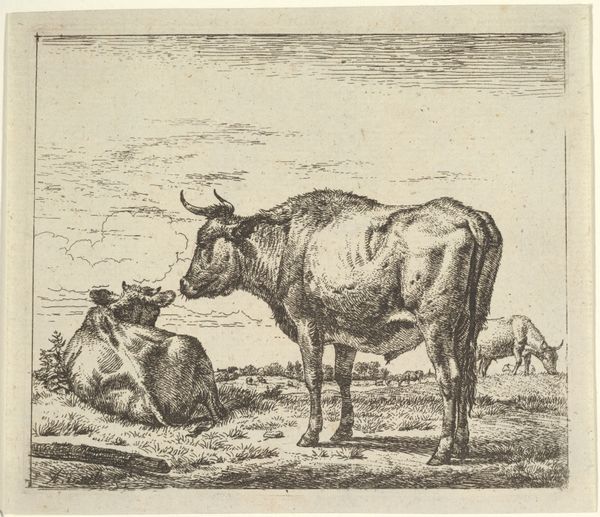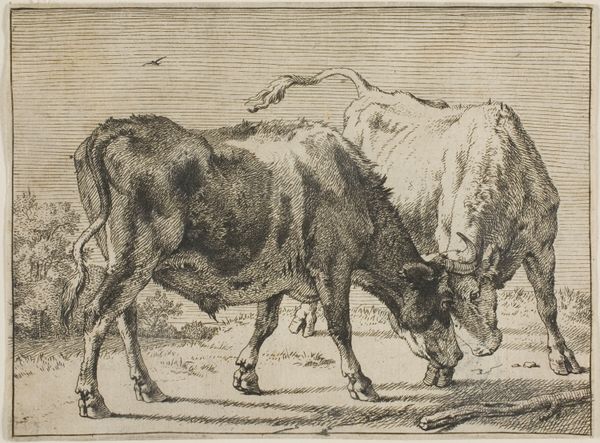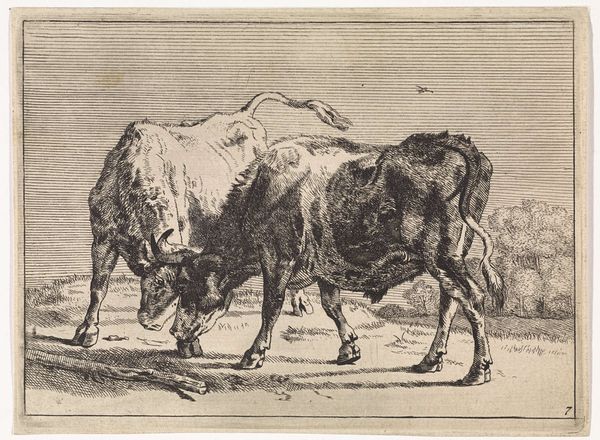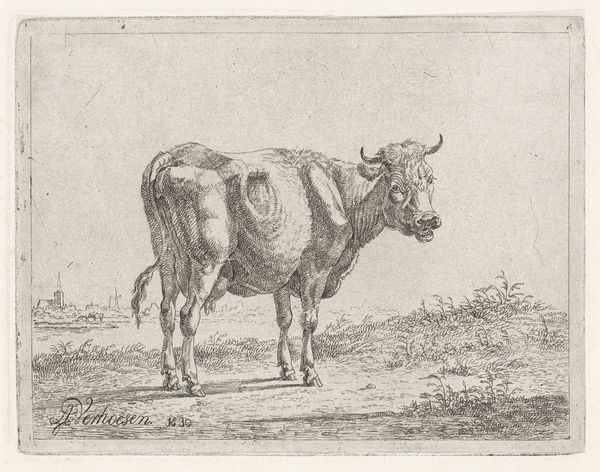
drawing, print, etching, engraving
#
drawing
#
animal
#
dutch-golden-age
# print
#
etching
#
landscape
#
form
#
line
#
genre-painting
#
engraving
#
realism
Dimensions: height 79 mm, width 68 mm
Copyright: Rijks Museum: Open Domain
Curator: I’m struck by how vulnerable the artist, Jacobus Cornelis Gaal, makes this bull appear. He created it using etching, engraving and printmaking techniques around 1858. The piece is called “Geblinddoekte Stier,” or "Blindfolded Bull." Editor: Blindfolded, or perhaps just preoccupied! I feel like I've caught this fella mid-grooming session in some sparse landscape. It’s got this sort of clumsy, unpretentious charm to it. A real study in awkward angles and bristly hair! Curator: Well, that gets to the core of what genre painting, the rendering of scenes from everyday life, attempts to do. These artists, in this case working during what many consider to be a second Golden Age in the Netherlands, took on everyday subjects and elevated them. The fact that it appears to be grooming itself brings up other considerations about the human relationship with farm animals, don't you think? Editor: Absolutely! I mean, look at that scratching pose, totally relatable. Though it does make me wonder, who's really benefiting here? The animal, oblivious to its potential, or the people, the ones doing the "elevating"? Are we turning these critters into metaphors for our own short sightedness? I'm only half-joking! Curator: It’s hard to separate any artwork from the values of its era. During this period, agrarian society was shifting due to urbanization. These genre paintings remind urban dwellers of the countryside, fostering nostalgia. Editor: Nostalgia for…bulls? That's an interesting angle. Maybe it’s just the etching, the gritty textures of the lines giving the subject such an individual personality. Curator: Etchings offered a widely reproducible and inexpensive image, bringing images like this to the public like never before. Gaal used a keen understanding of lines to illustrate form here. It's less about detail and more about suggestion. Editor: It's like he whispered the idea of a bull, and the paper filled in the rest with our own rural longings. And, really, is that so bad? We bring our stories to these pieces, whether they're intended or not. Thanks to that process, each one has endless narratives. Curator: Well said. Art both shapes and reflects society, stirring continuous dialogues between the artwork and its audience. Thank you for joining me on this journey. Editor: Indeed. Maybe I will go visit the countryside next.
Comments
No comments
Be the first to comment and join the conversation on the ultimate creative platform.
